
UFC refugee, accomplished kickboxer and noted mixed martial arts striker, Paul “Semtex” Daley is experiencing a bit of a resurgence, having gone 4-1 in his last five fights under the Bellator banner and coming off of a potential knockout of the year win over perennial contender Brennan Ward. Daley himself is a stone’s throw away from realising the potential and championship success that his prodigious physical talent and dynamic striking skill earmarked him for.
Standing in his way is the subject of this article, Rory ‘The Red King’ MacDonald. MacDonald makes his return to mixed martial arts after essentially taking over a year off to recover from injuries and explore free agency. But now the Canadian native is back in action and ready to resume his assault on the welterweight division.
Two things have changed over that period. He is no longer plying his trade in the Ultimate Fighting Championship and he is no longer the absolute stone cold lock for greatness or championships like he seemed to be 2-3 years ago. MacDonald is on the comeback trail to rehab his image, his health and re-establish his position in the mixed martial arts landscape.
MacDonald has long been seen as a MMA virtuoso, a combat sports wunderkind who was the next step in the evolution of the MMA fighter. A fighter who was seen has having the perfect blend of size, strength, athleticism, I.Q., range of skills and depth of skill in each range. In many ways MacDonald was seen as the prototype fighter, the upgrade over the previous “perfect” fighter Georges “GSP” St. Pierre; and for good reason. Unlike many who came into mixed martial arts late or had spent an extensive period of time competing in and developing an identity in an individual combat sport (boxing, kickboxing, jiu jitsu, wrestling, sambo, karate etc.).
MacDonald was a mixed martial artist, training to compete in, dominate and win championships as a mixed martial artist. Which made him a bit of an outlier. Rory made his debut in 2005 at the age of sixteen, after starting training at the tender age of 14, winning by submission and starting one of the more unique, balanced, comprehensive and consistent careers in mixed martial arts history.
The term complete fighter gets used far too often in mixed martial arts. When it’s used, what is usually meant is that you have a competent fighter. Someone who has an area of specialty, and is functionally effective enough in other areas, so that they can survive long enough to get back to their area of specialty or they are so good in one area it allows them to have success in areas they aren’t nearly as familiar with. Or you have a fighter who can defend, attack or counter across all ranges but can’t do all three things in all of the various areas of mixed martial arts. In reality, most MMA fighters rarely showcase a full array of disciplines, techniques and strategies.
That does not apply to Rory MacDonald who is, as boxer Andre Ward often makes reference to, an all-terrain fighter. He may not be world class in every aspect of mixed martial arts but there is no area he does not have an abundance of skill, comfort and awareness in. Rory has been good enough to grapple with the best in the sport of MMA and in the sport of grappling like Nate Diaz and Demian Maia. He has out-wrestled All-Americans like Tyron Woodley. While he can also hang on the feet with savvy and dynamic strikers like Tarec Saffedine and Stephen Thompson.

“The Red King” isn’t just multi skilled, he is multi-faceted in how he applies them. He can stick and move when being pressed, he can cut off the cage and walk down opponents who try to maintain distance, he can fight cautiously and manage risk, or he can slowly ramp up the volume and maliciousness of his attack. Rory has no form, he can be whatever he needs to be and fight, not survive, wherever he has to. Unlike many fighters who have hard caps on their ceilings as a result of technical limitations, Rory has a lot of freedom due to the extensive depth of skills he has that allow him to shift into whatever phase, strategy or mentality regardless of what his opponent is bringing to the table.
There is one thing that defines MacDonald in the cage, the jab. His jab is comparable to the best of past and modern jabs in mixed martial arts (e.g. Florian, St. Pierre, Lawal, Namajunas, Jedrzejczyk, Curran, etc). Much like his peers what makes his jab elite is its versatility. It can be used to gauge distance as it was against Saffedine and re-establish distance like against Lawler. It can be used as a line of offense or defense as displayed against Ellenberger. Or it can be used to direct and disrupt and while setting the table for combinations as it did in his bout with current champion Tyron Woodley.
This variation in usage also allows MacDonald to serve different purposes. He can play an out fighting game, counter game, defensive game, offensive game and a pressure game. On top of this he can use the jab to enhance both his offensive and defensive wrestling game, allowing him a bridge to clinches, a setup for takedowns, as well as an obstacle that inhibits opponents from doing similar things to him. The final beneficiary of his jab is his kicking game while fairly meat and potatoes in technique and setups, the jab allows him to set the range, that he can work off of with round kicks to the leg and body as well as build on with his front kick which he uses to the head and body.
So why is this man not undefeated? Why hasn’t he tasted UFC gold? How has he arrived in Bellator when he has clear wins over the number one contender and champion of the welterweight division?
A man who has won in every possible manner on the biggest stage, has somehow found himself without a championship and in a position where people are questioning where he fits in and what he has left. Unlike many fighters, Rory’s problem hasn’t been one of ego, skills, strategy or I.Q. but there is one thing he has had a problem with, the one thing that has defined all of his wins and one thing that when absent has defined all of his losses; and that is control.
Rory is many things, but two things he is not can let him down. He isn’t tremendously talented athletically and isn’t tremendously durable. For those reasons, the secret to Rory’s success has been control. When you dictate the pace and place of a fight, when you control exits and entries, when you can attack multiple targets in multiple ways using multiple tools you take things like athleticism, toughness, activity and power out of the equation or you minimise the role they play in a fight.
You don’t always need them or pay a price for not having them when you have a fully formed, diverse and deep game, on the flip side it’s hard to make them a factor when the guy your facing has the technical skill to neutralise your ability with offense and the strategical awareness to minimise the opportunities you have to apply it through defense and counters.
When a fighter can do that, fights become less a symphony of violence with ebbs, flows, highs and lows but become a choreographed dance with some brief moments of creativity, or better yet spontaneity. Or a canvas upon which said fighter can make use of colours, strokes and shades to determine the style, tone and look of the masterpiece created, which is somewhat of fundamental aspect of Tristar and its head coach, Firas Zahabi.

Zahabi has openly and frequently expressed a desire to avoid those type of fights that fans embrace and highlight the physical talent, offensive determination and mental grit of a fighter; his two best students, Georges St. Pierre and MacDonald, are textbook examples of the types of guys he likes to work with and the type of fights he likes his guys to be involved in. When the fight has veered outside of these parameters, is when both fighters have suffered losses or been involved in competitive wins, St. Pierre losing in one of the greatest upsets of all time to Matt Serra and MacDonald losing to Carlos “The Natural Born Killer” Condit, Robbie Lawler twice and Stephen “Wonderboy” Thompson.
In these fights, control was either ceded or never completely asserted and when MacDonald is not in control of every phase of the fight, whether it is pace, weapons, intensity, physicality, footwork or positioning, more times than not Rory loses. Unlike GSP, MacDonald was never a world class athlete. His dedication to the finer points of the game were equal part character and necessity.
Georges on the other hand made a choice to play a safer more disciplined and complete game after the loss to Serra, prior to that he was quite the finisher and a fighter who showcased a level of physical dominance that “The Red King” never had or was close to. How does that relate to the differences in their career arcs? Simple, when Georges lost control, or when he wasn’t immediately able to gain control; he had the physical ability to regain it immediately, whether it was explosiveness, reaction time, or pure physical strength. When he was in the biggest spots against the best opponents (Condit, Hendricks, Penn), he could rely on his ability to put him in positions that would allow his superior and more diverse technique and cage I.Q. to win the day. St. Pierre isn’t more durable than Rory, he isn’t bigger than Rory, he isn’t more experience in mixed martial arts (training) than Rory, but he is a better athlete.

Rory MacDonald is much more Kenny Florian than Georges St. Pierre. A very skilled, cerebral, technical and strategical fighter but one who lacks an equalizer, meaning that once a fight gets out of control or veers from the plan then, bad things happen. In the case of Rory it’s career altering injuries and career defining losses. Not having that ace in the hole has frequently stymied MacDonald, snatching defeat from the jaws of victory in three of his four losses, as many believe he was on his way to decision wins over Lawler and Condit before momentary lapses turned the fight around to one decision loss and two devastating stoppage losses.
The last loss to Lawler being particularly damaging as MacDonald endured a frightful amount of abuse over the length of the championship bout, that reached a crescendo as his nose was broken and his body quit on him in the 5th round of a fight that would have garnered him his first world title. Since then the question became is MacDonald damaged goods? The fight with Thompson provided no definite answers, Rory showed some of his legendary cage craft and veteran savvy, but also seemed a step slow and somewhat hesitant, if not unsure in how to approach the riddle that is “Wonderboy”.
After re-injuring his nose in the same fight the questions began to swirl, what was Rory’s value? What was his ceiling? Had he already peaked as a fighter? Two back to back losses and the man who was supposed to be the future king was left uncrowned and unsure of his future with the Ultimate Fighting Championship, much less mixed martial arts.
Which brings us to the present day, MacDonald signed to Bellator MMA in what many considered their biggest and potentially best signing in their flurry of free agent signings. And after a year away, he is finally making his debut against Paul “Semtex” Daley. The funny thing about this matchup is that just two years ago, this fight would have been a guaranteed win to many, as dynamic, devastating and dangerous as Semtex is, he is a one note fighter, who is as big a danger on the feet striking as he is a liability on the ground grappling and/or wrestling.
This is the type of fighter, “Ares” (MacDonald’s former alter ego) wouldn’t just defeat but would outclass, outwork and destroy. But that was a fighter who hadn’t taken career altering damage, a fighter who hadn’t suffered a gross injury or been away from the cage for an extended period of time. That Rory was sure of his talent, sure of his training and sure of his ability to execute but now we don’t know what he has or better yet we don’t know what he has left.
On paper MacDonald’s length, footwork, positioning, jab, transitions, wrestling, size and control on the ground should be more than enough to deal with a declining physical talent and a man who never fully embraced the entirety of the mixed martial arts game in Paul Daley.
On May 19th, we crown the next welterweight title challenger for Bellator MMA and more importantly we find out if this is a new beginning for “The Red King” or the beginning of the end.
Photos via Zuffa
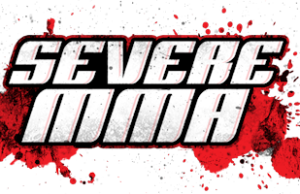
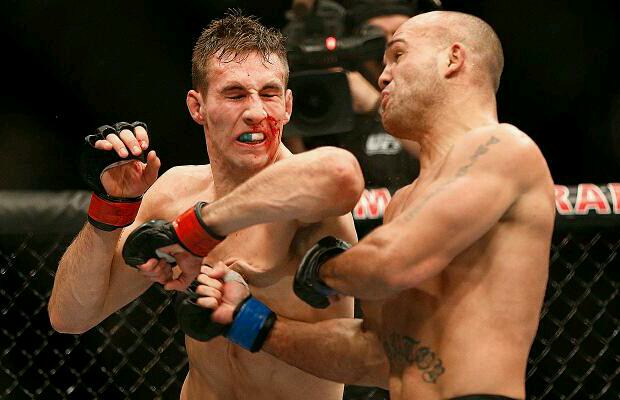




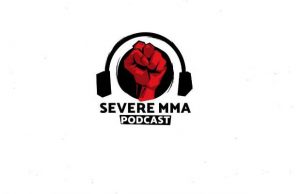
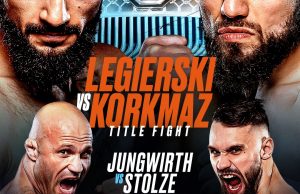
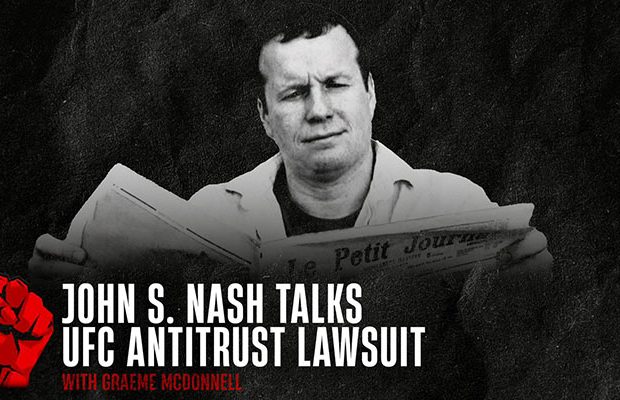


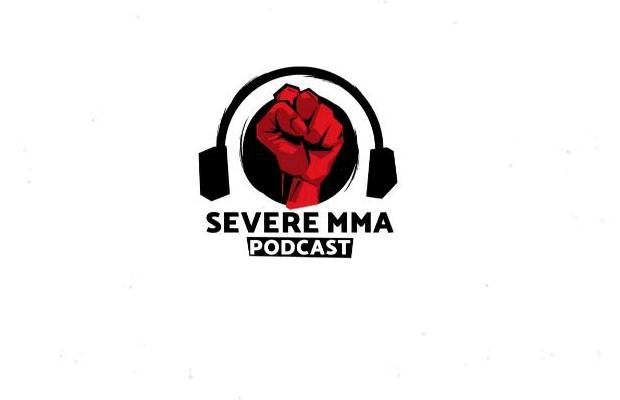
0 comments